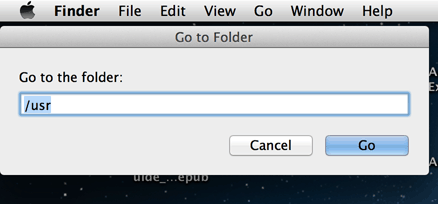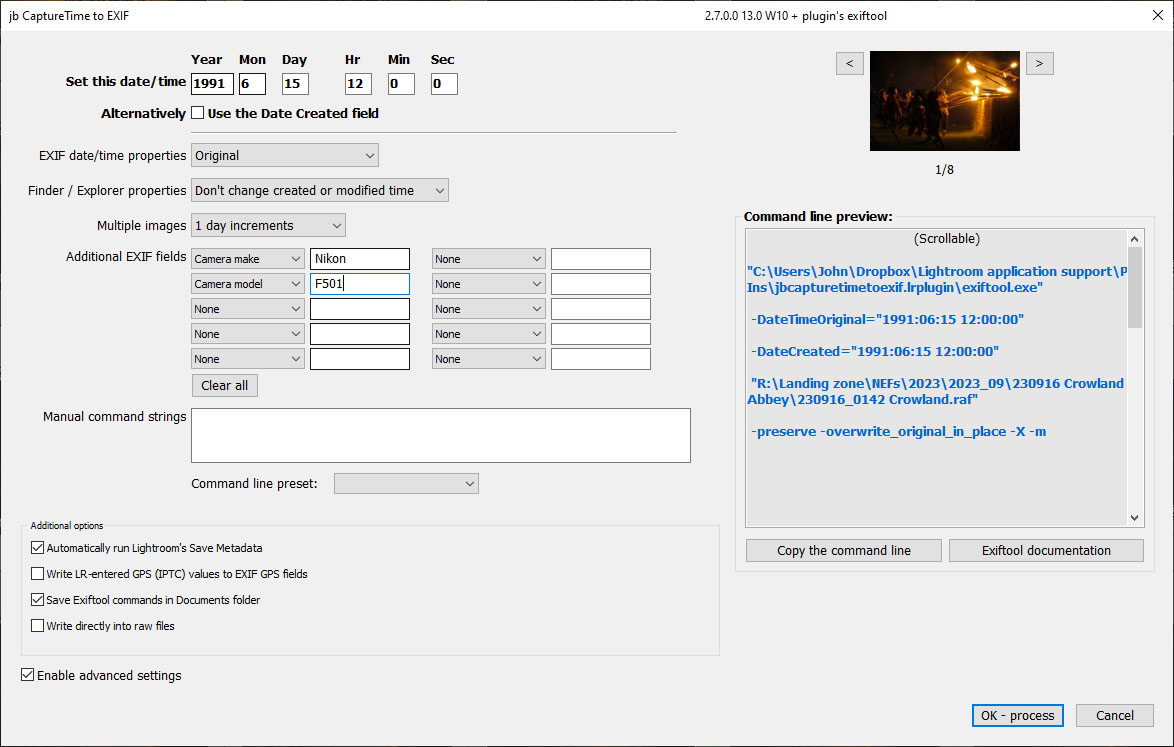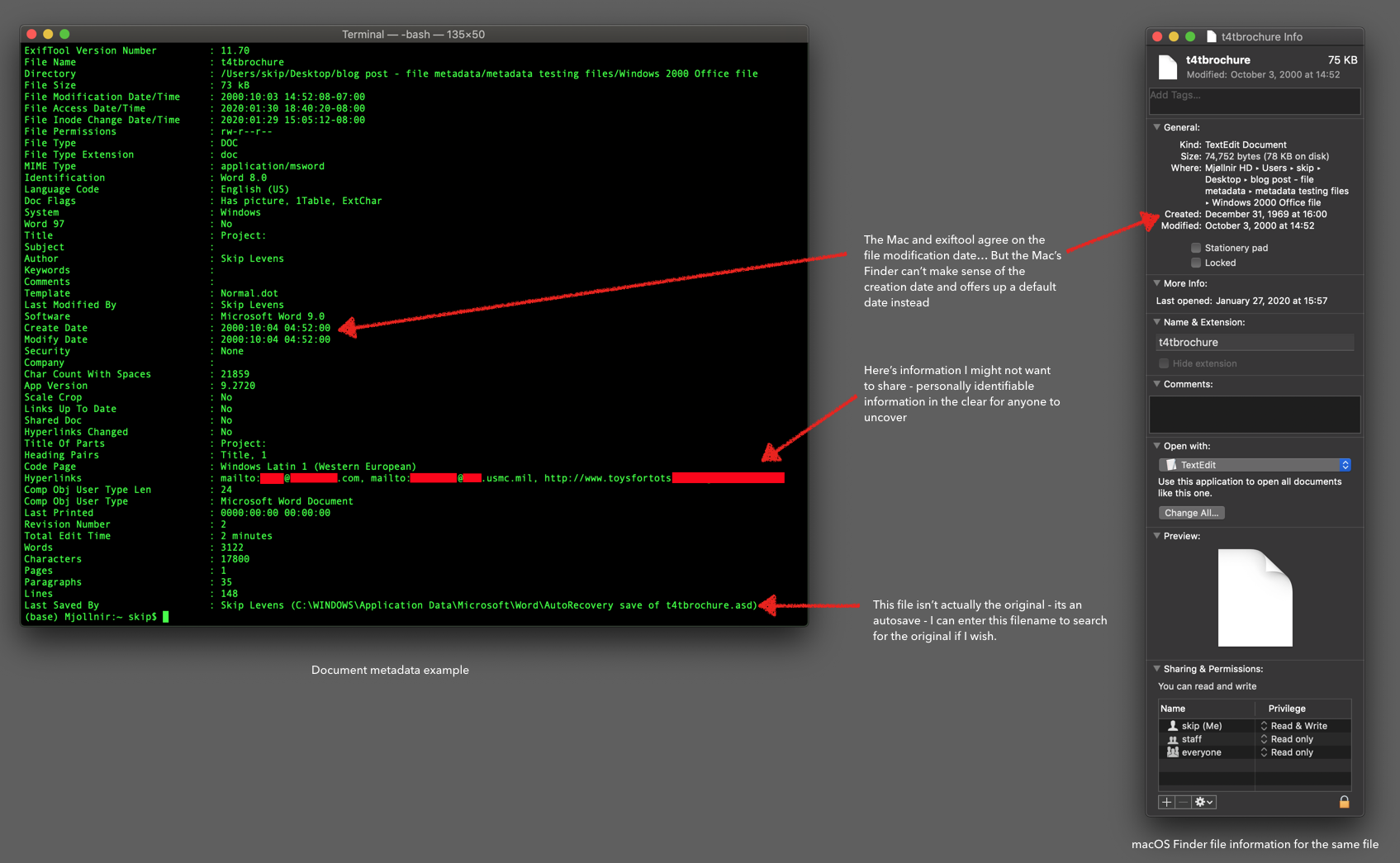

- How to edit exif metadata on mac exiftool how to#
- How to edit exif metadata on mac exiftool mac os x#
- How to edit exif metadata on mac exiftool plus#
For an edit like this, you can point it at your files and set it running. It's free, cross platform, and works on a LOT of file formats, including RAW formats from the vendors.
How to edit exif metadata on mac exiftool plus#
ExifTool is a platform-independent Perl library plus a command-line application for reading, writing and editing meta information in a wide variety of files. If you're not too afraid of the command line, ExifTool is probably what you are looking for. It can be saved either in JPEG, TIFF, and DNG files, or as a separate XMP file when you are working with RAW files. Reads EXIF data using ExifTool < and returns results as a data frame. Metadata contains information about all post-processing manipulations.

You will also see a thumbnail of the picture. If you use Adobe software, such as Photoshop or Lightroom, EXIF info will provide you with information about the camera settings and the steps made during post-processing (XMP Data). Such formats as GIF and PNG do not usually support this feature. However, only JPEG files allow reading metadata. This knowledge is very important not only for amateurs but also for more experienced photographers who want to know what equipment a shooter used for capturing a particular picture. This is a handy feature when you are searching for images taken with a particular lens, camera, or using certain configurations.įor novices, this is a great opportunity to see what configurations were used in a particular photo, since metadata stores information about processing, color adjustment actions, and even filters that were applied. You can select the files you want to read about. Press the header to check what kind of info the program can reveal. Click on the tab to see a pull-down menu. In fact, the application is compatible with multiple formats, including EXIF, GPS, IPTC, XMP, JFIF, GeoTIFF, ICC Profile, Photoshop IRB, FlashPix, and AFCP. For the tutorial I'll be using this example of a printer inside the Newspaper building at the Historical Village of Hokkaido, in Japan.Launch Lightroom, head to Library Module, find a Metadata tab in the Filter bar for learning more info about a file. ExifTool is a practical tool for checking, editing, and writing metadata for any photo you have stored on your Mac. Not required but good to have is the Pose Heading Degree (the Pose Heading Degree is the position on your panorama facing North) If you don't know which way is north it's not a big issue just use '0'ĥ. To get started make sure you have the following information, Latitude, Longitude and the respective references of the location of the panorama. It's going to be convenient and faster if you create a single folder for your final panoramic images that way you won't have to be creating a url to the folder every time.Ĥ.

How to edit exif metadata on mac exiftool mac os x#
Download the Mac OS X Package 10.05 (2.4mb) or visit the website Ĩ. So let's get started with ExifTool by Phil Harvey. Let me tell you it's super fast and efficient. Now this doesn't mean you can't use either program but you will have to work in a different way, just using ExifTool. However the recent release by Apple of El Capitan has for now broken the ability for the two applications to work together.

How to edit exif metadata on mac exiftool how to#
One thing that has remained constant is the requirement to add a specific set of MetaData to your panorama before loading it up to Google Maps.Ī previous tutorial, Prepare 360˚ Panoramas for Google+ on Mac OSX, explained how to use ExifTool with pyExifToolGui to add the data to your image. In the change over some things remained the same while many others changed. In June Google effectively shuttered Google Map Views and a legion of 360˚ panorama photographers started the painful struggle to move from Map Views, to a much more constrained and unfriendly Google Maps platform.


 0 kommentar(er)
0 kommentar(er)
